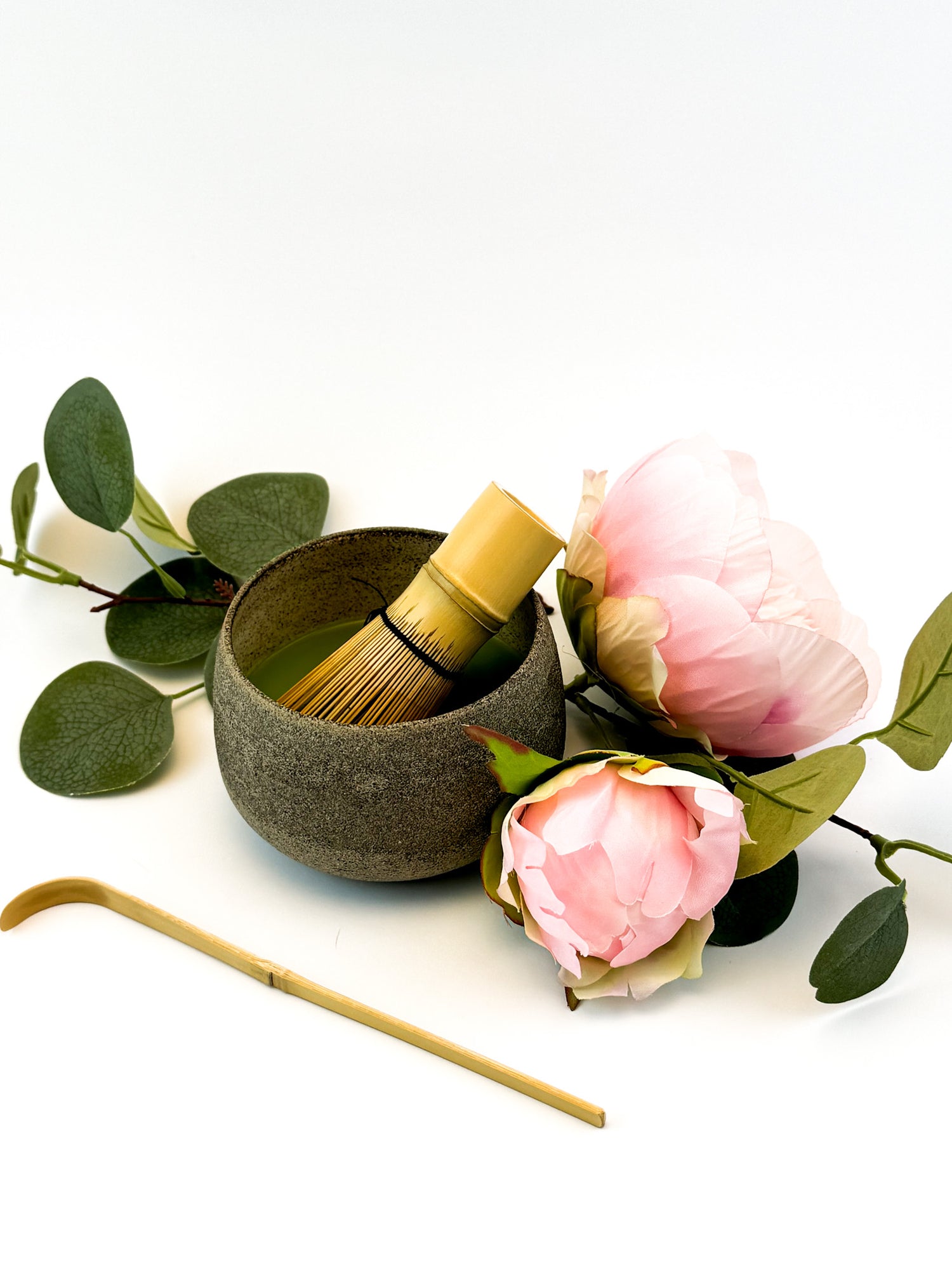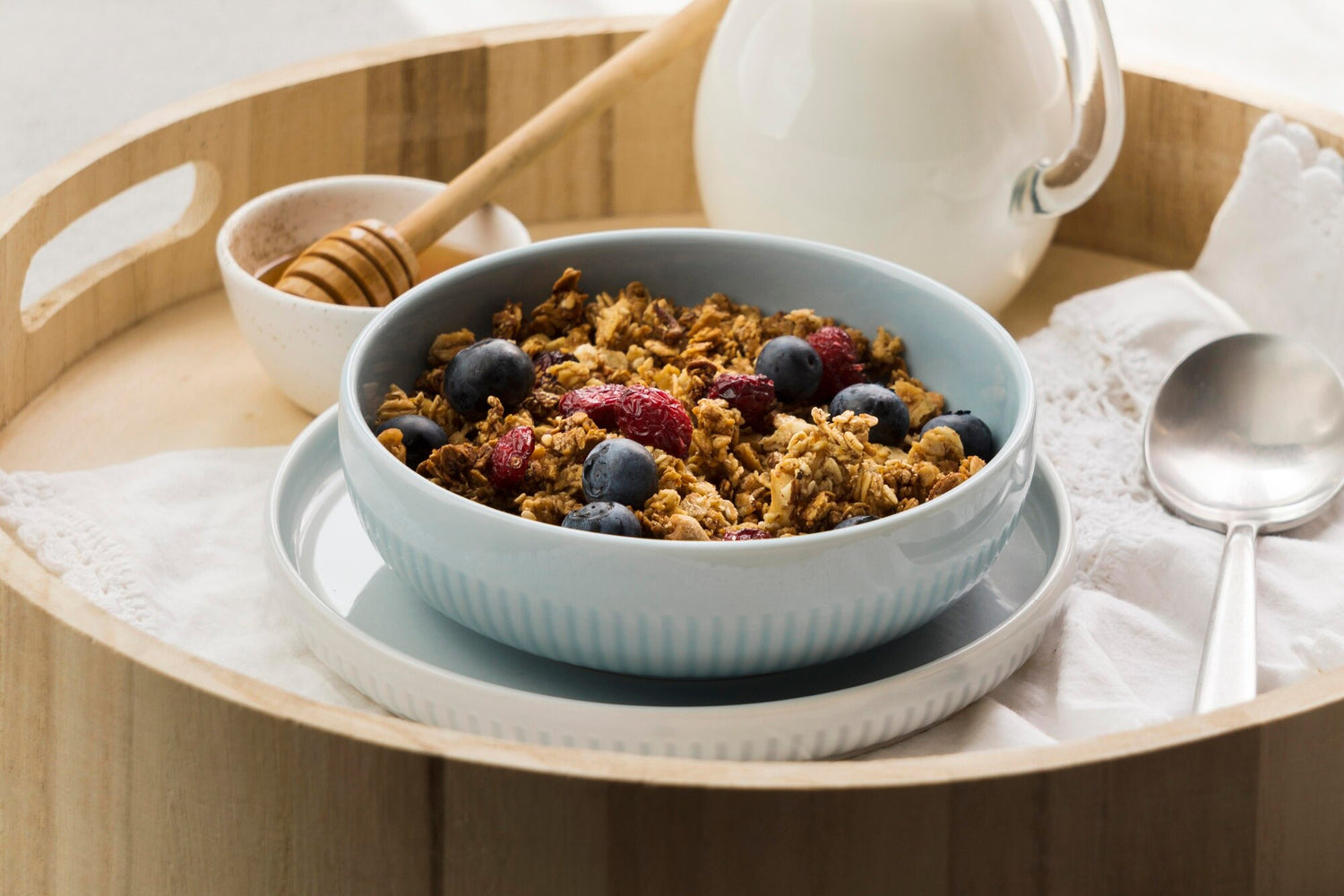-

Matcha "Hisui" Organic
MoreA premium Japanese ceremonial matcha tea that prides itself on quality and organic origin. Its intense green color and rich flavor are the result of carefully selected, organically grown Camellia sinensis tea leaves
-

Kotobuki
MoreThe tea is grown on the slopes of the volcanic Kirishima Mountains. The soil is full of minerals that give matcha its special flavor. The careful blending of Tencha leaves allows the matcha powder to acquire a velvety jade color, offering a deep yet mild vegetal-sweet flavor.
-

Monzen
MoreThe tea is grown on a clay substrate that contains many minerals, which contributes to its rich flavor. By roasting the leaves well, matcha provides a unique flavor reminiscent of chocolate and nuts.
-

Accessories
Discover the perfect tools to prepare your favorite tea. The accessories will...
Why matcha?
-
Increases energy and focus
L-theanine helps maintain a state of relaxation and well-being by affecting brain function. It contributes to better concentration and clarity of thought, without the jittery energy that often follows drinking coffee.
-
Rich source of antioxidants
It contains a high concentration of antioxidants such as polyphenols and catechins. Antioxidants help fight free radicals in the body, which can reduce oxidative stress and the risk of various diseases.
-
Benefits for heart and brain health
The antioxidants in matcha may reduce the risk of cardiovascular disease and help lower blood pressure and cholesterol. Research has shown that matcha can improve memory, attention, and cognitive function.
Odkrij svoj notranji zen z našo matcho iz Japonske – regija Uji

MORE THAN GREEN TEA
What is matcha?
Matcha is not your typical green tea; it is a powdered form of finely ground tea leaves from the Camellia sinensis plant. Unlike traditional tea, where the leaves are steeped and discarded, matcha allows you to consume the entire leaf, giving you a concentrated dose of flavor and nutrients.

recipe
Matcha Maple Granola
Prepare a healthy and crunchy snack with our matcha! The combination of oatmeal, nuts, seeds and maple syrup, enriched with aromatic matcha powder, will delight your taste buds. Ideal for breakfast or a snack!
How to recognize good matcha?
-
Color
Good matcha should be vibrant green, indicating high chlorophyll content. Washed or yellowish green may indicate lower quality.
-
Texture
Good quality matcha should be finely ground and feel smooth when rubbed between your fingers. Coarse matcha is often of lower quality.
-
Taste
High-quality matcha has a rich umami flavor with a hint of sweetness, while lower-quality matcha may taste bitter or astringent.
-
Packaging
Matcha should be sold in airtight containers to protect it from light and moisture. Avoid matcha sold in clear bags, as light can degrade its quality.
-
Origin
Quality matcha usually comes from Japan, especially from regions like Uji, Nishio, or Shizuoka. Check the label for origin.
-
Ceremonial vs. culinary
For drinking, look for ‘ceremonial grade’ matcha. For cooking or baking, ‘culinary grade’ is suitable, which is usually less expensive.


Let customers speak for us
from 6 reviewsMatcho pijem skupaj z javorjevim sirupom in kančkom karamele. To je nekaj najlepšega za začetek delovnega dne. Super matcha!
Matcha ima zelo poln okus, čutim čokolado, ki je omenjena v opisu.
Glede na to, da je matcha res kakovostna, glinen lonček pa ročno delo, je res dobra cena :)
Glinen lonček sem kupila prijateljici za rojstni dan, prosila sem za gravuro njenega imena in rezultat je bil prekrasen :) Priporočam!
Tale matcha je res top! Barva je čudovito zelena (nič rumenkasta ali zbledela), okus pa prijetno sladkast, brez tiste grenkobe, ki jo imajo slabše matche. Tekstura je ful fina in se lepo speni, tako da se res pije kot po maslu.
Najboljša mi je kar sama z vodo. Če iščeš res kvalitetno matcho za vsak dan, je to to. 10/10, bi spet naročila! 😍





